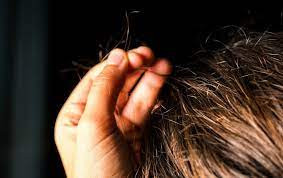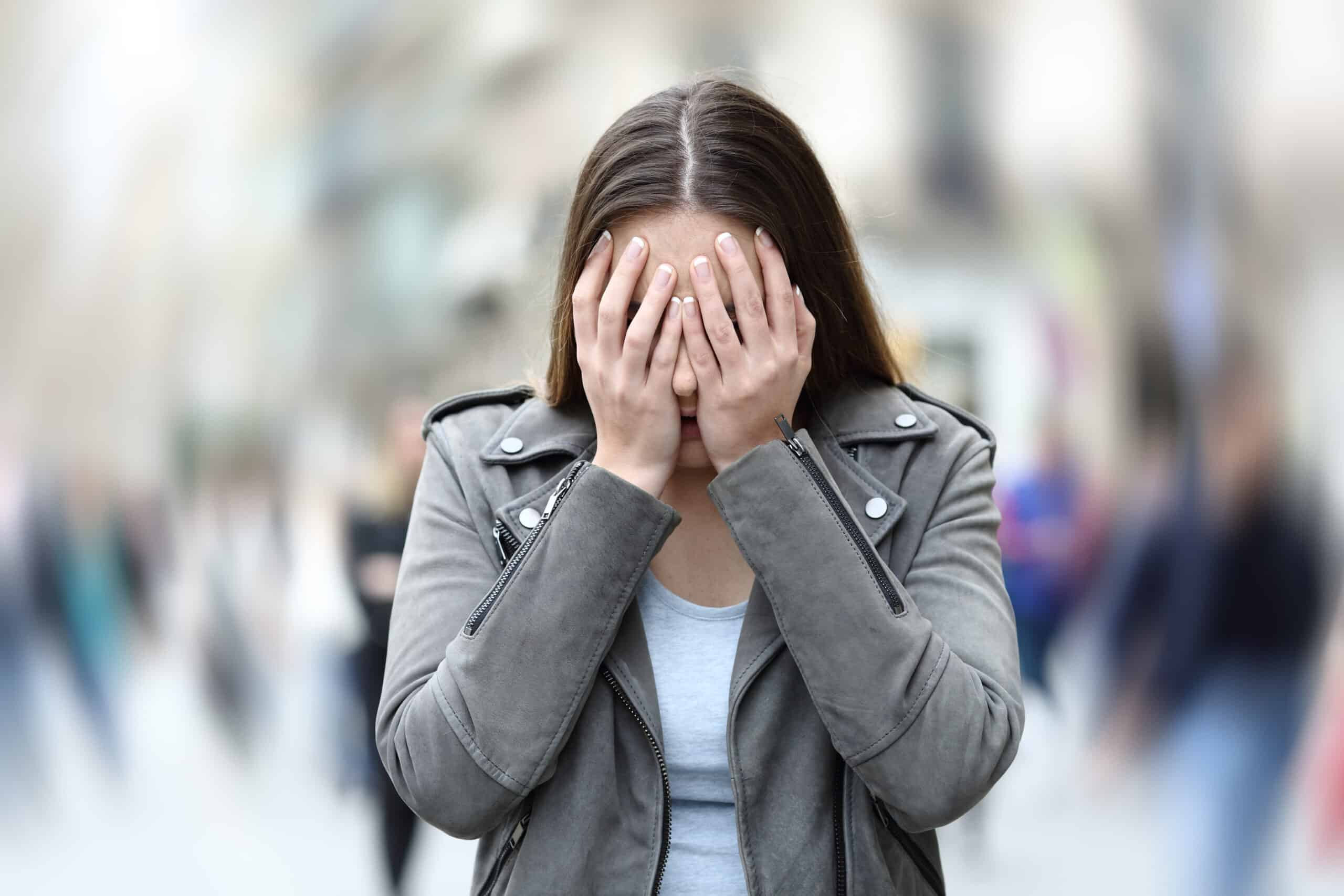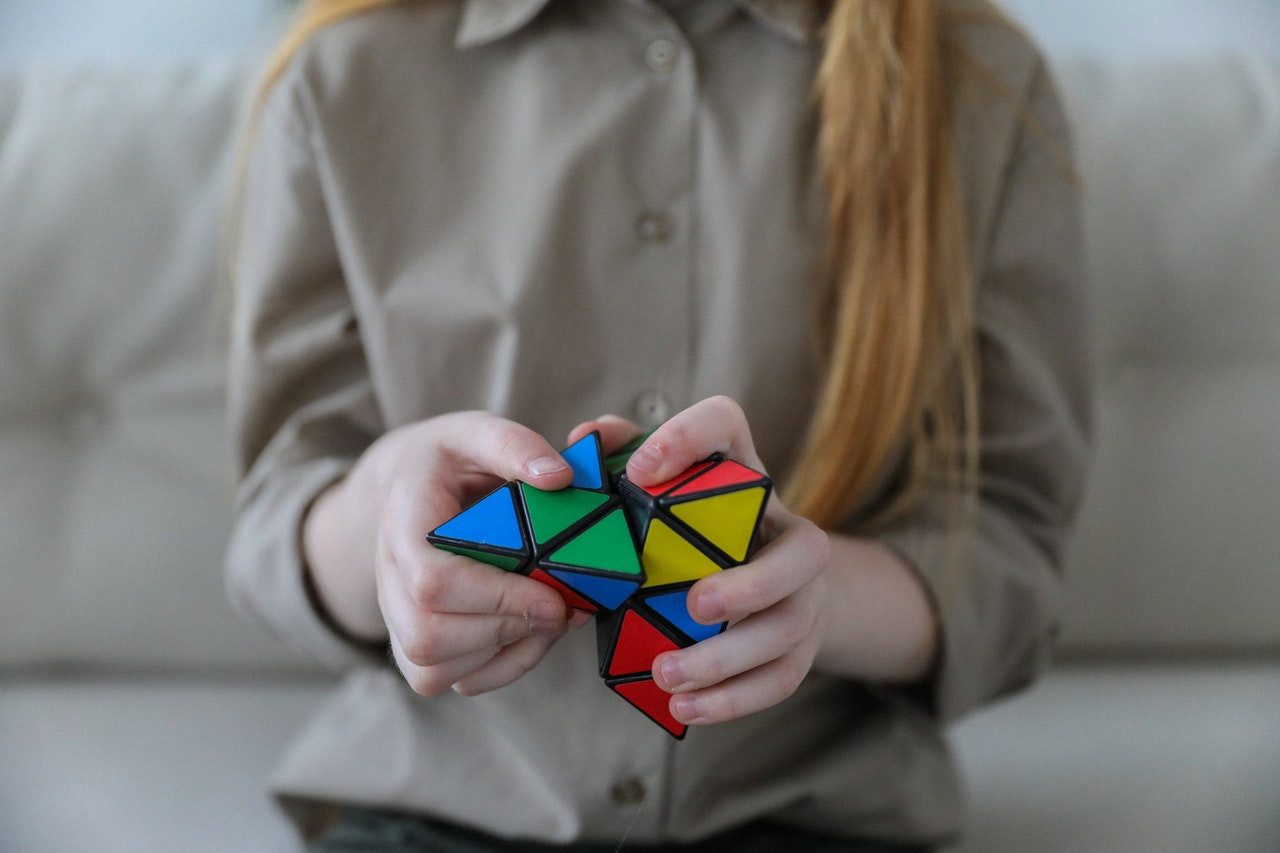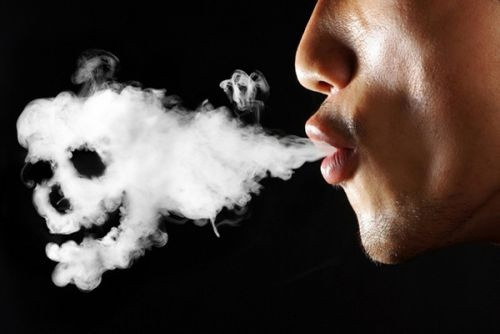Definisi
Trikotilomania atau gangguan mencabuti rambut adalah suatu gangguan jiwa di mana seseorang tidak dapat menahan keinginan untuk mencabut rambut secara berulang, meskipun sudah mencoba untuk berhenti. Orang yang mengalami trikotilomania juga memiliki keinginan tak tertahankan untuk mencabuti rambut di bagian tubuh lainnya, seperti alis dan bulu mata.
Pada beberapa orang, trikotilomania dapat bersifat ringan dan mudah dikontrol. Namun, pada beberapa orang yang lain, keinginan untuk menarik rambut sangat besar.
Penyebab
Penyebab trikotilomania belum diketahui secara pasti. Namun, diperkirakan disebabkan oleh:
- Adanya stres atau kecemasan, yang direspon dengan cara menarik atau mencabuti rambut.
- Ketidakseimbangan zat kimia di otak. Hal ini mirip dengan gangguan obsesif kompulsif.
- Perubahan kadar hormon, misalnya pada saat masa pubertas.
Faktor Risiko
Terdapat beberapa faktor yang dapat meningkatkan risiko terkena trikotilomania, yaitu:
- Riwayat keluarga. Faktor genetik memiliki peran dalam perkembangan trikotilomania dan kondisi ini dapat terjadi pada orang yang memiliki keluarga dekat dengan riwayat yang sama.
- Usia. Trikotilomania biasanya muncul saat sebelum masa remaja awal, paling sering antara usia 10 sampai 13 tahun dan sering merupakan permasalahan hidup jangka panjang.
- Penyakit lain. Orang dengan trikotilomania dapat juga memiliki gangguan lain seperti depresi, kecemasan, atau gangguan obsesif kompulsif.
- Stres. Situasi stres yang berat atau suatu kejadian yang menyebabkan stres berat dapat mencetuskan trikotilomania pada beberapa orang.
Meskipun trikotilomania jauh lebih sering ditemukan pada wanita dibandingkan pria, namun hal ini diperkirakan karena lebih banyak wanita yang mencari pertolongan medis. Pada masa kanak-kanak awal, anak laki-laki dan perempuan memiliki risiko yang sama untuk trikotilomania.
Gejala
Tanda dan gejala trikotilomania yang sering ditemui adalah sebagai berikut:
- Keinginan yang intens untuk mencabut rambutnya dan akan merasakan tekanan jika tidak melakukannya. Setelah mencabut rambutnya, orang tersebut akan merasakan perasaan lega. Hal ini terjadi berulang. Kebanyakan orang dengan trikotilomania mencabut rambut kulit kepala, namun beberapa dapat menarik rambut dari area tubuh lain seperti alis, bulu mata, rambut kemaluan, kumis, atau jenggot.
- Terus mencoba untuk berhenti mencabut rambut, telah mengurangi frekuensinya namun tidak berhasil.
- Area kebotakan pada kepala yang dapat memiliki bentuk yang tidak biasa dan lebih berat pada satu sisi kepala. Rambut menjadi tipis, tidak hanya pada area kepala namun juga pada alis dan bulu mata.
- Menggigit, mengunyah, atau memakan rambut yang ditarik.
- Memainkan rambut yang dicabut atau menggesekannya pada wajah atau bibir.
- Adanya stres atau masalah yang signifikan pada tempat kerja, sekolah, atau pada situasi sosial akibat kebiasaan mencabut rambut.
Banyak orang dengan trikotilomania juga menarik kulit, menggigit kuku atau bibir. Terkadang menarik rambut dari hewan peliharaan atau boneka, atau dari material seperti kain atau selimut dapat merupakan tanda trikotilomania. Kebanyakan orang dengan trikotilomania menarik rambut secara diam-diam dan umumnya akan mencoba menyembunyikan kondisi ini dari orang lain.
Trikotilomania dapat berkaitan dengan emosi, seperti:
- Emosi negatif. Pada banyak orang dengan trikotilomania, mencabut rambut adalah cara untuk menghadapi perasaan negatif atau tidak nyaman, seperti stres, cemas, tekanan, bosan, kesepian, kelelahan, atau frustasi.
- Emosi positif. Orang dengan trikotilomania sering merasa bahwa mencabut rambut memberikan sensasi kepuasan. Sebagai akibatnya, mereka akan terus menarik rambut untuk mempertahankan perasaan positif ini.
Trikotilomania adalah gangguan yang bersifat jangka panjang (kronis). Tanpa terapi, keparahan gejala dapat bervariasi seiring berjalannya waktu. Sebagai contoh, adanya perubahan hormonal saat menstruasi dapat memperburuk gejala pada wanita.
Diagnosis
Dokter akan melakukan beberapa pemeriksaan dan wawancara pemeriksaan kepada pasien untuk menegakkan diagnosis trikotilomania. Beberapa hal yang dilakukan seperti:
- Pemeriksaan tingkat keparahan kehilangan rambut
- Menanyakan mengenai kerontokan rambut
- Menyingkirkan kemungkinan lain yang menyebabkan kebiasaan mencabut rambut atau rambut rontok melalui beberapa pemeriksaan
- Mengidentfikasi adanya masalah fisik atau mental yang dapat berhubungan dengan kebiasaan mencabut rambut
Dokter juga dapat melakukan pemeriksaan lanjutan seperti mengambil sampel jaringan kulit kepala atau rambut untuk menyingkirkan penyebab lain, seperti adanya infeksi.
Tata Laksana
Trikotilomania biasanya diterapi dengan menggunakan satu jenis terapi perilaku kognitif yang disebut latihan mengembalikan kebiasaan. Hal ini bertujuan untuk membantu Anda menggantikan kebiasaan yang buruk dengan sesuatu yang tidak merugikan. Terapi ini biasanya meliputi:
- Menuliskan diari mengenai kebiasaan mencabut rambut
- Mengidentifikasi pencetus tarikan rambut dan mempelajari mengenai cara untuk mencegahnya
- Mengganti aksi tarikan rambut dengan aksi lainnya, misalnya memeras atau memencet bola
- Mendapatkan dorongan emosional dan dukungan dari orang terdekat
Obat-obatan seperti antidepresan biasanya tidak digunakan untuk menangani trikotilomania.
Hal yang dapat Anda lakukan sendiri saat Anda sedang merasakan keinginan kuat untuk menarik rambut adalah sebagai berikut:
- Memencet atau mencengkeram bola atau benda lain yang sejenis
- Kepalkan tangan dan kencangkan otot-otot lengan
- Gunakan mainan jari
- Gunakan bandana atau topi yang ketat, seperti kupluk
- Ciptakanlah kata-kata yang dapat Anda katakan berulang dengan keras sampai keinginan kuat untuk menarik rambut hilang
- Berendam yang menenangkan untuk melepas stres atau kecemasan
- Latihan pernapasan dalam, hingga keinginan untuk menarik rambut hilang
- Olahraga
- Memasang plester pada ujung jari
- Memotong rambut menjadi pendek
Selain itu, bersikap terbuka mengenai kondisi Anda kepada orang yang Anda percaya juga dapat membantu karena terkadang menyembunyikan sesuatu akan membuat kecemasan menjadi lebih buruk.
Komplikasi
Meskipun tidak berpotensi menyebabkan hal yang serius, trikotilomania dapat menyebabkan dampak negatif yang signifikan dalam hidup Anda. Komplikasi yang dapat terjadi meliputi:
- Stres. Banyak orang dengan trikotilomania melaporkan adanya perasaan malu. Mereka merasa rendah diri, depresi, cemas, dan kadang melarikan diri ke penggunaan alkohol atau obat-obatan terlarang.
- Masalah pada fungsi sosial dan pekerjaan. Malu akibat rambut yang rontok dapat menyebabkan seseorang menghindari aktivitas social dan kesempatan kerja. Orang dengan trikotilomania dapat mengenakan rambut palsu dan merombak rambut untuk menutupi kebotakan, atau menggunakan bulu mata palsu. Beberapa orang dapat menghindari intimasi karena takut kondisinya akan terungkap.
- Kerusakan kulit dan rambut. Menarik rambut secara terus-menerus dapat menyebabkan terbentuknya luka dan kerusakan lain, seperti infeksi pada kulit kepala atau area lain di mana rambut sering ditarik, dan dapat mempengaruhi pertumbuhan rambut secara permanen.
- Gumpalan rambut. Memakan rambut dapat menyebabkan terbentuknya gumpalan rambut yang besar pada saluran cerna. Dalam beberapa tahun, gumpalan ini dapat menyebabkan penurunan berat badan, muntah, sumbatan saluran cerna, dan bahkan kematian.
Pencegahan
Tidak ada cara yang terbukti dapat mencegah trikotilomania. Namun, mendapatkan terapi sesegera mungkin saat gejala mulai timbul dapat sangat membantu. Mempelajari mengenai manajemen stres juga merupakan hal yang baik, karena stres sering menjadi pencetus perilaku mencabut rambut.
Kapan Harus ke Dokter
Anda sebaiknya berkonsultasi ke dokter jika Anda sering menarik rambut Anda atau Anda menyadari anak Anda sering melakukannya. Anda juga sebaiknya berkonsultasi ke dokter jika Anda atau anak Anda memiliki kebiasaan memakan rambut. Hal ini dapat menyebabkan adanya gumpalan rambut di lambung yang dapat menyebabkan penyakit serius.
Dokter dapat memeriksa area kebotakan rambut untuk memeriksa adanya penyebab lain yang dapat menyebabkan rambut rontok, seperti infeksi kulit.
Jika dokter mencurigai Anda mengalami trikotilomania, maka Anda akan dirujuk ke psikiater untuk mendapatkan terapi yang disebut dengan terapi perilaku kognitif.
Mau tahu informasi seputar penyakit lainnya? Cek di sini, ya!
- dr Ayu Munawaroh, MKK
Trichotillomania (hair-pulling disorder). (2022). Retrieved 29 August 2022, from https://www.nhs.uk/mental-health/conditions/trichotillomania/
Trichotillomania (hair-pulling disorder) - Diagnosis and treatment - Mayo Clinic. (2022). Retrieved 29 August 2022, from https://www.mayoclinic.org/diseases-conditions/trichotillomania/diagnosis-treatment/drc-20355193
What Is Trichotillomania?. (2022). Retrieved 29 August 2022, from https://www.webmd.com/anxiety-panic/guide/trichotillomania#091e9c5e80008ed6-2-8






/62d244a608bfb.jpg)





